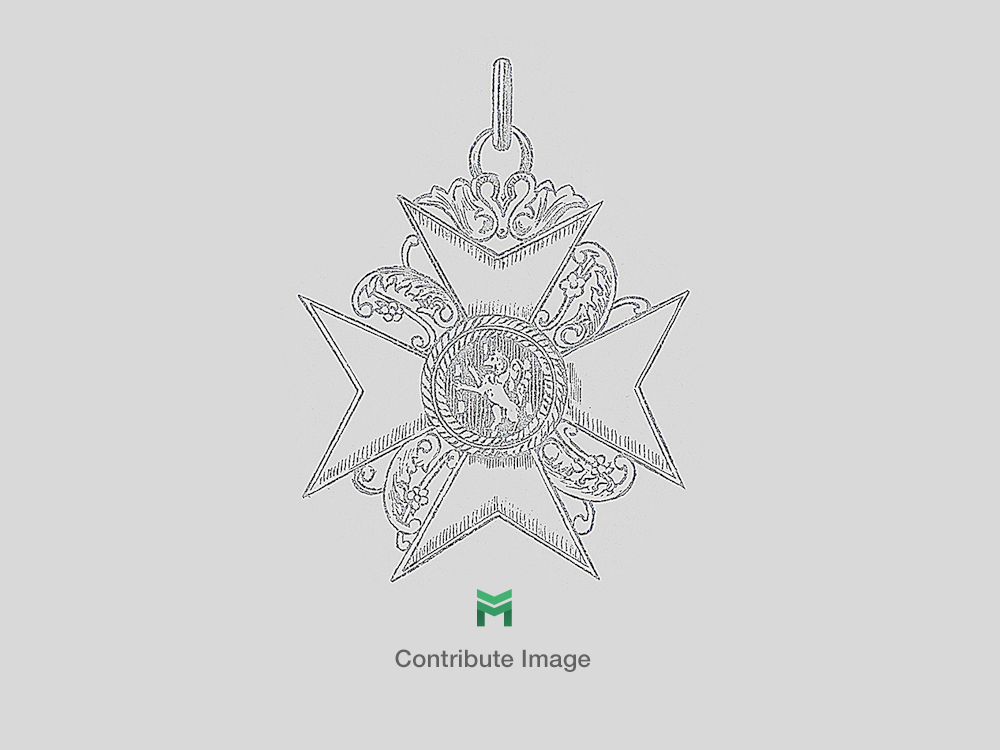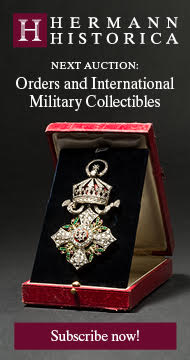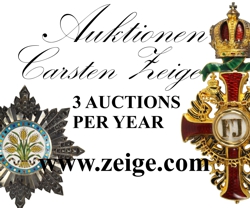Afrikakorps Luftwaffe Steel Helmet M35
CATEGORY: Version
SKU: 23.GOR.01.02.01.03.001.000
Estimated market value:

Estimated market value:
During the Second World War, German troops stationed in northern Africa are generally referred to as the Afrikakorps. Technically, this is not entirely correct, since some German units operating in Africa were not actually part of the DAK (Deutsches Afrikakorps), and some units of it were, in fact, Italian ones. However, for the purpose of collecting so-called “tropical” uniforms and insignia, collectors have simplified the meaning of the term.
The first German troops were sent to northern Africa in February of 1941, to support their Italian allies against the British. The climate of the African continent made it necessary to wear specialised uniforms and gear that not only supported the soldiers in serving in a hot and arid environment, but also helped them in blending in with the landscape, which, in general, presented itself as brown, olive, khaki, or sand/tan in colour. Worn over long periods of time under the blistering desert sun, some uniforms were eventually bleached to white or off-white. Uniforms and insignia in these colours are often referred to as “tropical”, and it is worth noting that they weren’t just worn by members of units stationed in Africa, but in the entire Mediterranean theatre of war, including southern France, Italy, the Balkans, and Greece, as well as in southern Russia during the summer months. Tropical uniforms were worn by members of all three branches of the Wehrmacht: the Heer (army), the Kriegsmarine (navy), and the Luftwaffe (air force). Members of the Waffen-SS stationed in southerly regions also wore tropical-style uniforms, and even though they technically have no connection to the DAK, all tropical uniforms and insignia of all branches of the German military are listed here.
There are three main models of steel helmets that were worn by general Luftwaffe troops, the M35, M40, and M42. There were also three models of steel helmets worn by Luftwaffe Paratroopers during the Third Reich, the M36, the M37, and the M38. All of these helmet models are composed of several main elements, including the shell, the liner, the air vents/grommets, the chinstrap, the paint, and the insignia/decals. Each iteration of the steel helmet was launched in an effort to reduce the time and cost associated with helmet production.
The basic materials of which the helmet was fashioned include steel, aluminum, and leather. On the inside there is a helmet liner, designed to absorb shock. Most helmets have two grommet ventilation holes. The chinstrap was usually dyed black.
The helmets came in five sizes. Their quality significantly worsened as time and the war progressed.
A black, white, and red shield was painted onto the right side. The shield was to be abolished in 1940. However, this was not always adhered to. Onto the left side of the helmet a Luftwaffe style eagle decal was painted, facing towards the front. There are two main patterns of this eagle. The first pattern is nicknamed the “droop tail” pattern. It fell out of use in 1940. It is characterized by a shorter wingspan compared to the second pattern, the eagle has an open beak, and is more “cartoonish” in appearance. The second pattern eagle is known as the “stylized” eagle. It first appeared in 1937. Compared to the first pattern, this eagle has a wider wingspan, a closed beak, and appears more graphically life-like. Eagles were gold-coloured for general ranks and silver-coloured for everybody else. The eagle decal was eliminated in 1943, but, again, this was not always adhered to. Due to the differing number of decals on the helmets, versions have been dubbed double decal, single decal, and no decal.
Luftwaffe helmets are blue-grey in colour. Pre-war helmets often have the wearer’s unit stamped or painted in the interior.
Several ways of camouflage were used. Depending on availability and terrain, these included painting the helmets, attaching wires, nets, or straps to hold foliage and branches, and some units were even given cloth camouflage liners, introduced in 1942, to wrap around the helmet. These however were only used on special occasions and only by frontline or elite troops. Camouflage liners show a pattern of shapes and colours on one side, including several straps for attaching foliage, whereas on the other side they are white for wear in winter, and miss any additional straps.
Apart from the camouflage liners camouflaging efforts were not applied by the producing companies, but only made in the field, either by individual soldiers or whole units. This practice started in 1940/41 in North Africa.
Camouflage efforts for Afrikakorps helmets have been found with varying patterns or single-coloured to blend in with more uniform terrain. It was common to mix sand in with the paint on a helmet for a dulling effect.
As the manufacturing progressed from one model to the next, there was no official change in the name of the helmets. The terms “M(odel) 35” or “M(odel) 40” were attributed to the different varieties by collectors after the war and have no official character.
Helmets will vary in appearance due to production by different factories and subcontractors, and changes in specifications.
Inspired by the first modern steel helmets introduced by the French and the British, the first German steel helmet was developed and introduced in early 1916. It was slightly modified in 1918 in that the lugbolts on the neck guard were removed and replaced by a “D” type connection that was directly affixed to the liner band. A special version of the M18 helmet has a cut-out part of the rim around the ear. It was used by those soldiers that needed to use communication devices and relied on their ability to hear. These were often cavalry and signals units.
After the First World War, due to the Treaty of Versailles, the German army was downsized to only 100,000 soldiers. Since several million helmets had been produced, the Reichswehr never ran out of suitable headgear.
Minor modifications were made in 1923 with the introduction of provincial shield decals, and in 1931 with new chinstraps and a new liner system. On March 14, 1933 the provincial shields gave way to the national tricolour shield, and on February 17th, 1934 the eagle emblem shield was introduced.
However, the M16 and M18 helmets proved to be ineffective to cope with the effects of new and improved ballistics. A new model, the M35 helmet, was designed. The steel was reinforced and the helmet was slightly smaller, but the design remained the same. It was introduced on June 25, 1935. However, production only began in late 1935, and the first time it was given out in mentionable quantities was in 1936.
Even after the development of the M35 Steel Helmet, the M16 helmet was still used by second line and training troops, and continued to be used well into the Second World War.
The Model 40 was introduced in 1940. It differs from the Model 35 in that the manufacturing process was simplified by way of a hot stamping technique. The ventilation holes were made in a different way, and the painting looks more grey and rough. Other than that, the two models are very similar.
The Model 42 was introduced on April 20, 1942. Production was made yet more economical, which resulted in a helmet looking even more crude in design and colour. The biggest difference was that the rim was left to be sharp now instead of the earlier practice of crimping it inwardly to make a round rim.

Comments
Sign in to comment and reply.


Scroll Top